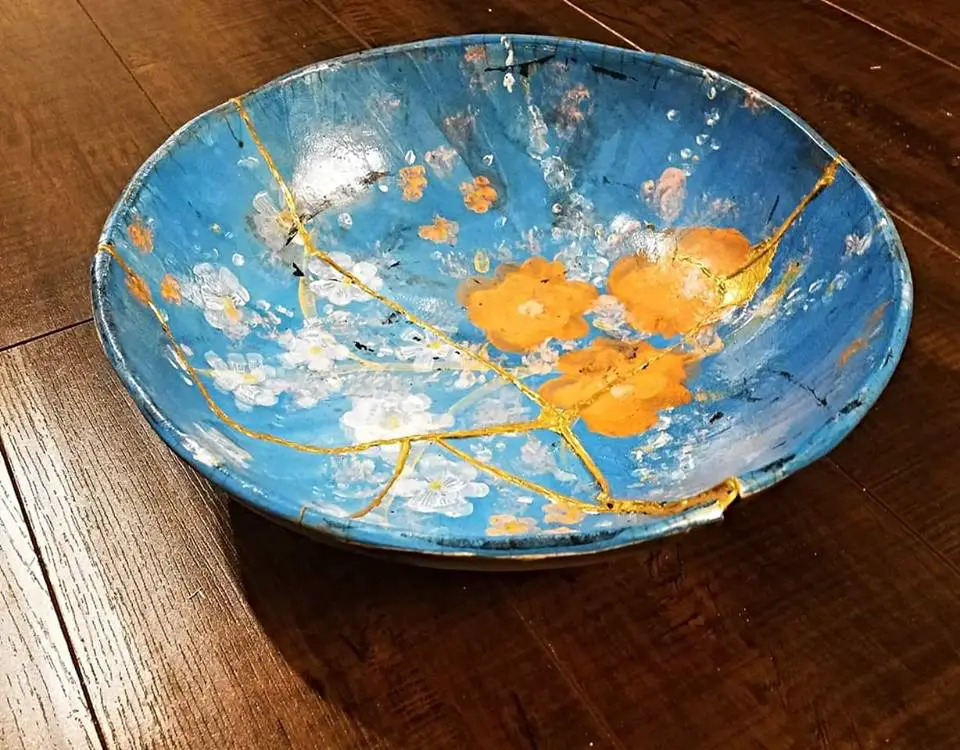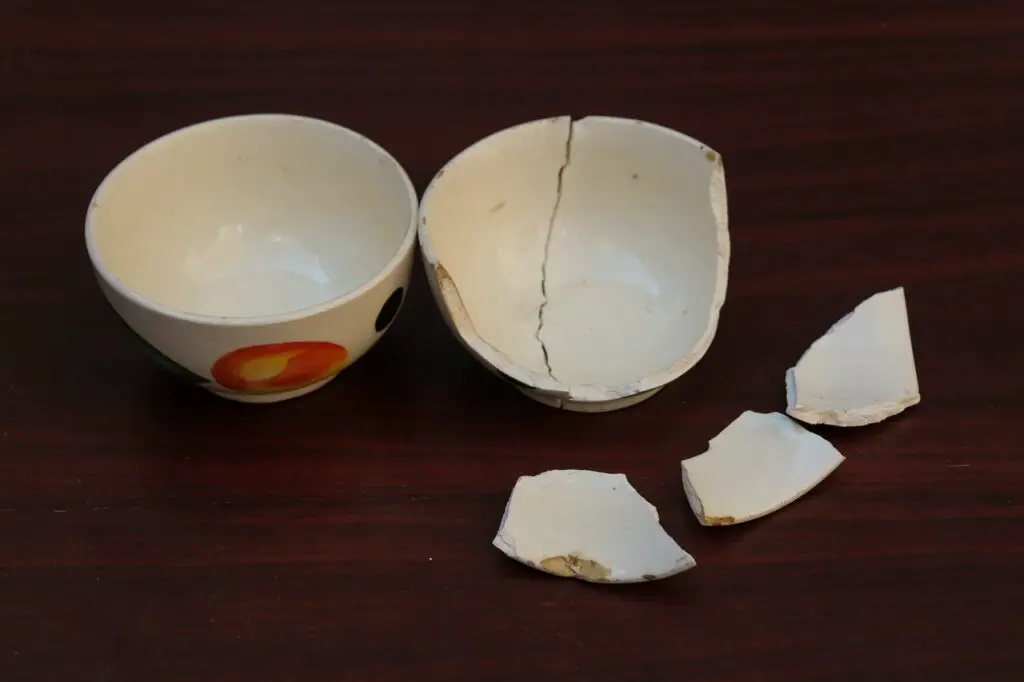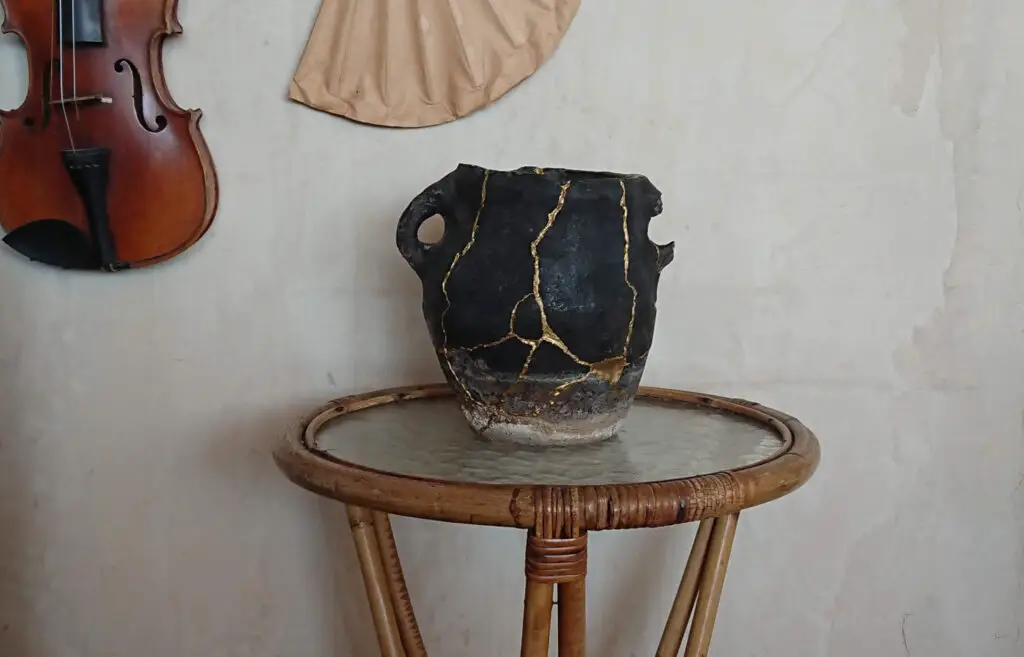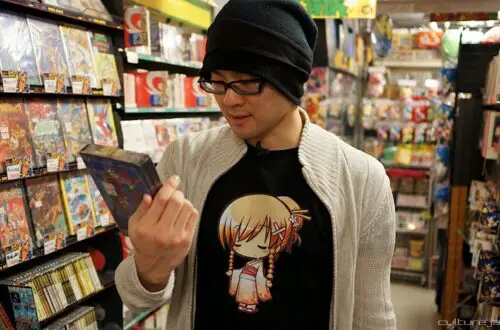
Japanese Kintsugi Art Explained
Japanese people love to preserve and practice their traditional crafts. One such excellent technique is kintsugi (金継ぎ) or “golden joinery” that displays the essence of resilience and brings out the beauty in imperfections.
Also known as kintsukuroi (金繕い) or “golden repair”, this ancient Japanese practice is about joining the broken pieces of a pottery item together by using a precious metal, such as lacquer dusted with powdered gold, platinum, or silver. Instead of disguising the breakage lines, this technique highlights them, displaying the imperfections with pride. Every repaired piece with irregular patterns turns out unique and more beautiful than the original.
Quick Navigation

The Philosophy of Kintsugi Art
The idea behind kintsugi is to give a broken, discarded item a new lease of life and make it beautiful by refining its “scars”.
“Accepting Defects” Theory
Embracing the flaws and shortcomings is an essential part of the Japanese philosophy of wabi-sabi (侘寂). Wabi roughly translates to “rustic simplicity” and sabi means “taking pleasure in the imperfect.”
The teachings of wabi-sabi are about accepting the asymmetry of life by being open to both its good and bad parts. Human beings experience bad patches in their lives, and achieving perfection is not a realistic goal. Kintsugi crafts encourage people to celebrate defects, just like the wabi-sabi philosophy.
“No Mind” Theory
Christy Bartlett found a correlation between kintsugi and the Japanese philosophy mushin (無心) or “no mind” in her book Flickwerk: The Aesthetics of Mended Japanese Ceramics. This ideology is about being aware of your existence within a moment and having self-control and composure amid changing conditions.
Bartlett connects this need to accept change with kintsugi art’s practice of repair and proud display of the damage. Human beings are susceptible to changes, just like the ceramicware can crack or shatter, and they have to accept those ups and downs — something similar to mending a broken pottery item.
Kintsugi art can be described as a corporal expression of the spiritual teachings of mushin.
Where to Learn Kintsugi Art
Repairing broken ceramic pieces is a challenging crafting work that requires know-how, patience, skills, and specific materials. In Japan, you will find numerous kintsugi studios that offer training courses and workshops. These businesses employ a kintsugi master to ensure that the trainees get to learn the authentic techniques.
Some studios offer online courses too if you prefer remote learning. Enroll in such a program for a fee and learn the fantastic art form of restoring broken pottery.
You can even learn the basic techniques for free, thanks to numerous free videos on YouTube. There are kintsugi repair kits, containing real urushi lacquer, that you can use for simple DIY projects.
Types of Kintsugi Techniques
Among several styles of kintsugi art, the primary methods are:
Crack: This method involves applying lacquer or gold dust and resin to join a ceramic item’s broken parts with minimal overlap from the missing particles.
Piece: In this technique, the artist uses gold or a gold/lacquer compound to fill up a small missing part.
Joint call: This still uses the traditional precious metal lacquer for attaching the broken fragments together. Unlike the “piece” method, the missing shards here are replaced with a same-shaped but non-matching piece. Mending in this way creates a patchwork style.
To get hold of all these methods, you need to learn the crafting techniques from a kintsugi master.
The Impact of Kintsugi in Today’s Culture
Like many other Japanese cultural elements and art forms, kintsugi has also become successful in grabbing the attention of the rest of the world. The ongoing enthusiasm for ceramic pottery and all-round interest for hand-crafted items have further fueled the ardor for kintsugi art.
There is no denying that this crafting has its own fan base other than the mass interest in clay and ceramic art. A crop of modern artists has taken this mending process a step further, making it a medium for their innovative artistic expressions.
The contemporary work on kintsugi is mostly experimental that celebrates the spiritual meaning of this art form. Instead of focusing on what’s not there, modern artists focus on celebrating what is there and regenerating a discarded object through synthesis and repair.
Examples of Modern Kintsugi Art
Contemporary artists don’t always use traditional materials and methods but emphasize the principles of renovation by patching up. Some notable figures modernizing this art form are the Korean sculptor Yee Soo-Kyung and British artist Paul Scott.

Yee Soo-Kyung creates aesthetic sculptor pieces from discarded tableware, and she interprets this as one broken ceramic to find and rely on another broken piece. Scott also employs his own version of the kintsugi technique to create a collage of shattered ceramic parts.
The art connoisseurs originally did not recognize kintsugi as a separate art form. However, it received due recognition ultimately and many prestigious museums and art galleries arranged exhibitions featuring kintsugi and similar repair methods.
How to Exercise the Teachings of Kintsugi in Human Life
In the beginning, kintsugi was just a practical mending technique for ceramic pottery. But with its gradual popularity, people have started seeing the deep spiritual meanings hidden behind it. Just like a ceramic item, human beings are also fallible. So, they can be broken (not literally) on an emotional level. However, exposing vulnerabilities does not make us weak.
With care and precise techniques, useless ceramicware can be restored to their previous glory or even better. Similarly, we survive painful experiences and lapses in judgment and grow by accepting our mistakes and showing resilience. Also, admitting errors makes a person more trustworthy and creates room for intimacy in relationships.
Psychologists have found that people appreciate vulnerability in others but become too critical of their own mistakes and imperfections. Of course, accepting the errors does not mean showing weakness.
In her book Daring Greatly, Houston professor Brene Brown described imperfections as gifts that can be transformed into something better. In like manner, kintsugi crafters repair broken ceramics with something precious. Not to mention, embracing imperfections is finding a way to celebrate our strengths.

Systematic Methods of Applying Kintsugi Teachings
Candice Kumai, an author and professional chef, gives a detailed explanation regarding the message behind kintsugi and how the teachings can be applied to human life in her book Kintsugi Wellness: The Japanese Art of Nourishing Mind, Body, and Spirit.
According to her methods, you can be on the track to psychological healing by following these simple practices:
Wabi-sabi
This philosophy is about leading a simple life by embracing imperfections. So, you should do the same to heal your mind.
Gaman
This word refers to “perseverance” or “patience”. Being resilient against daily stresses while keeping composure is the way to practice gaman in everyday life.
Yuimaru
It roughly translates to “the spirit of cooperation.” Kumai explains it as a way to care for your inner circle. As a matter of fact, it teaches you to heal by valuing the people and relationships in your life.
Eiyoshoku
Kumai translates this term as “nourishment”. Keeping your body and mind nourished with healthy food and meditation is a key aspect of self-care.

Kansha
It means “appreciation” or “gratitude”. You should be thankful for everything in your life, good or bad. In fact, Realizing the value of everything you have helps to stop lamenting over what you don’t have.
The main teachings of kintsugi wellness are accepting things present in your life. They also encourage to embrace the mistakes without being ashamed of them. Doing so brings peace to our mind by freeing us from the desire of having more or becoming someone different.
Origin of Kintsugi Art
Lacquerware (a craft featuring a board variety of fine and decorative arts) is a time-honored Japanese tradition. So, it’s tough to pinpoint a definite time frame to the origin of kintsugi art.
The Story behind the Art
Art historians have associated it with a 15th-century incident related to a Japanese shōgun Ashikaga Yoshimasa. After breaking his favorite tea bowl, he sent it to China for repairs. But Chinese craftsmen used ugly metal stapling for putting it back together.
Local craftsmen stepped in and decided to patch the bowl up with an aesthetic approach. So, they transformed it into something more valuable by filling up the cracks with golden lacquer. The shōgun was happy to get back his favorite tea bowl, more beautiful than before. Afterwards, that method laid the ground for a completely new art form.

This seems to be a fitting origin story because different cultural and art forms flourished during Yoshimasa’s ruling period. Several other movements also arose in that era, such as Higashiyama Bunka (culture of the eastern mountains), ikebana (the art of flower arrangement), sado (the tea ceremony), and more.
An Age-Old technique
Kintsugi was a new art form, but the practice of attaching broken pieces with urushi lacquer (extracted from the Rhus verniciflua plant) has been in China and Japan for thousands of years. Also, craftspeople used to apply combined techniques of kintsugi and maki-e (sprinkled picture) for repairing ceramics.
Gradually, the art form picked in the interest of people. In fact, some obsessed collectors used to smash their valuable pottery to repair it with kintsugi techniques.

Modern kintsugi artists also use this smashing technique to create refined pieces of ceramicware. The complete fixing of an item may take up to a month because of the drying time and various steps of mending.




